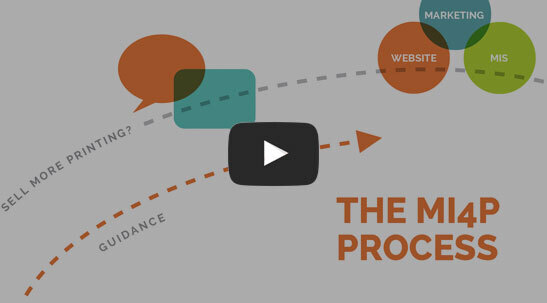3 Steps to Crafting A Marketing Message Your Ideal Buyers Will Love (Part 1: Who)

Messaging is everything.
It drives your entire business, should be crafted synonymously with your core values, and built around a clear, compelling reason why your prospects should want to do business with you.
Yet, the majority of printers have no core messaging, and no relevant message strategy (other than to sell something somebody wants).
So, how do you craft content and messaging that’s irresistible to your prospects, and at the same time clearly explains the value you offer your buyers and how you can help them?
Over the next four weeks, you’ll learn three steps to help you create a marketing message your ideal buyers will love, plus we’ll walk you through an invaluable exercise called The Empathy Map.
The Who
Before you can get someone to buy from you, you need to know what to say to them, and how to say it.
You’ll never get that right unless you know who you’re talking to.
Here at Marketing Ideas For Printers, we call this creating buyer personas. You could call them avatars or even characters if you prefer.
It’s All in the Research
The main idea is to create a fictional representation of your ideal customer or persona. To create your persona and get to know your “who,” the first step is to research your ideal buyer.
You see, you don’t want just anyone buying from you, rather you want the IDEAL buyer to do business with. Trying to convince someone to buy your printing solutions who’s broke or part of the wrong target audience is like trying to drag a stubborn mule across the desert. In other words, not awesome.
If you need help creating your ideal buyer persona, check out Entrepreneur’s “All About Buyer Personas.”
It Only Works if You Do It
Don’t underestimate this part of the process. Like anything, it’ll only work for you if you’re willing to put the time in. Creating a buyer persona is critically important because the right messaging will help you win new customers and clients. The wrong messaging will make you lose. So, keep in mind that it’s equally important to outline the “wrong” audience or persona as well.
Once you have your “who” in place, join us next week for the “what.” You’ll learn how to find out what exactly they want to hear from you.

